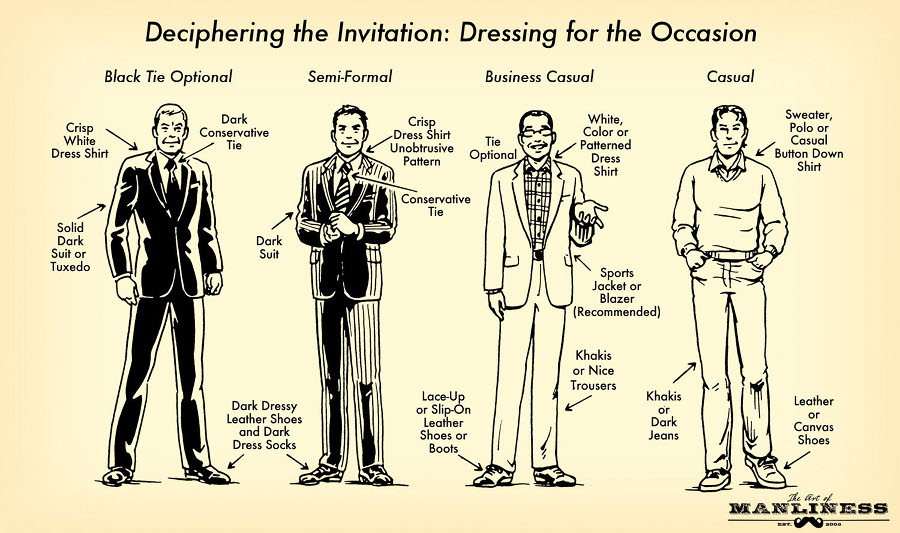Dress codes, according to Merriam-Webster are:
formally or socially imposed standards of dress
Wikipedia has this to say:
A dress code is a set of rules governing what garments may be worn together and in what setting. A classification of these codes is normally made for varying levels of formality and times of day.
Dress codes are written and, more often, unwritten rules with regard to clothing. Different societies and cultures will have different dress norms although Western styles are commonly accepted as valid.”
Western dress codes for men typically fall into one of the following categories:
- Activewear or Sportswear
- Casual
- Business Casual
- Business/Informal
- Black Tie/Semi-Formal
- White Tie/Formal

Why are dress codes important? The most simple and useful answer would be that they set expectations of how a person should appear in a given instance. For example, it would be awkward – and possibly “career limiting” – for someone whose business dress code is business casual or business/semi-formal to go to work in a track suit or shorts. Additionally, private organizations can enforce even more strictures on dress codes, including limiting employees from displaying tattoos, piercings or other body modifications:
“A person can be fired because the company doesn’t like your shoes,” explains Robert D. Lipman, who manages the New York employment firm Lipman & Plesur, LLP, and is President of Interactive Employment Training, Inc.. I called Lipman to ask whether a person fired solely for having visible tattoos or piercings has any recourse under United States law. “We get a lot of calls like this,” he said. “People say ‘This is America. We should be able to do what we want.’ But I tell them that once you walk into a private employers workplace, your rights are limited.”
Dress codes vary greatly from company to company, as different working environments demand different styles of attire. Obviously, a Fortune 500 company will have a much more formal dress code than a tech firm, which, in turn, is more formal than a start-up. Even within companies, dress codes can vary among positions. For instance, a CEO should be better dressed than a programmer.
Over the next three posts, I will discuss the six dress codes, give examples of what garments fall into each category and what occasions call for which style of dress.
References:
- http://www.m-w.com
- http://en.wikipedia.com
- http://www.bmezine.com
- http://www.askmen.com
- http://artofmanliness.com